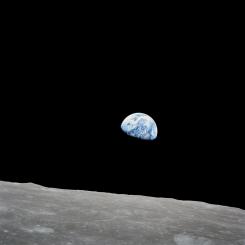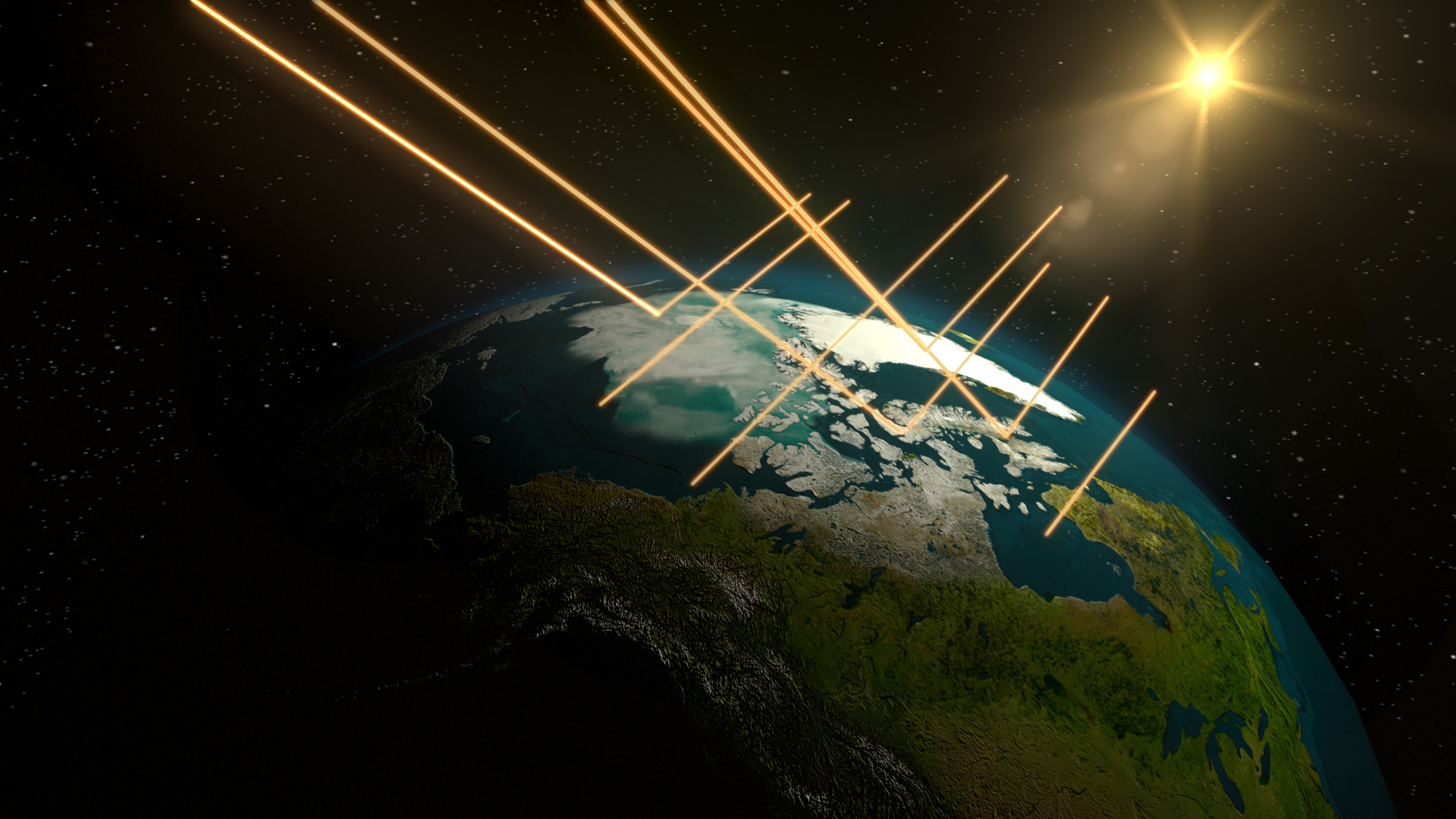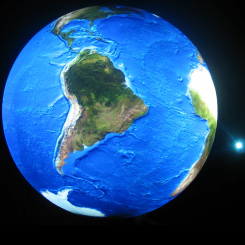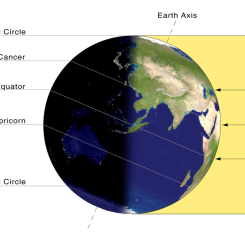Lesson Plans
Astronaut Pictures: Claim, Evidence & Reasoning
Overview
Students use albedo values of common surfaces along with photographic images of Earth taken from the International Space Station to make an argument about specific anthropogenic activities that impact Earth’s albedo.
Materials Required
- Astronaut Pictures CER - Teacher Slide Show
- Astronaut Pictures CER - Astronaut Photographs - Student Slides
- Astronaut Pictures CER - Student Sheets PDF
Procedure
Using the Astronaut Pictures CER - Teacher Slide Show, the teacher leads a short presentation that defines the vocabulary words albedo and anthropogenic. Students share, in pairs or small groups, their ideas about anthropogenic activities and their impact on Earth’s albedo.
Following the presentation, the teacher displays the bar chart of Surface Albedo Values for students to record data on their Student Sheet.
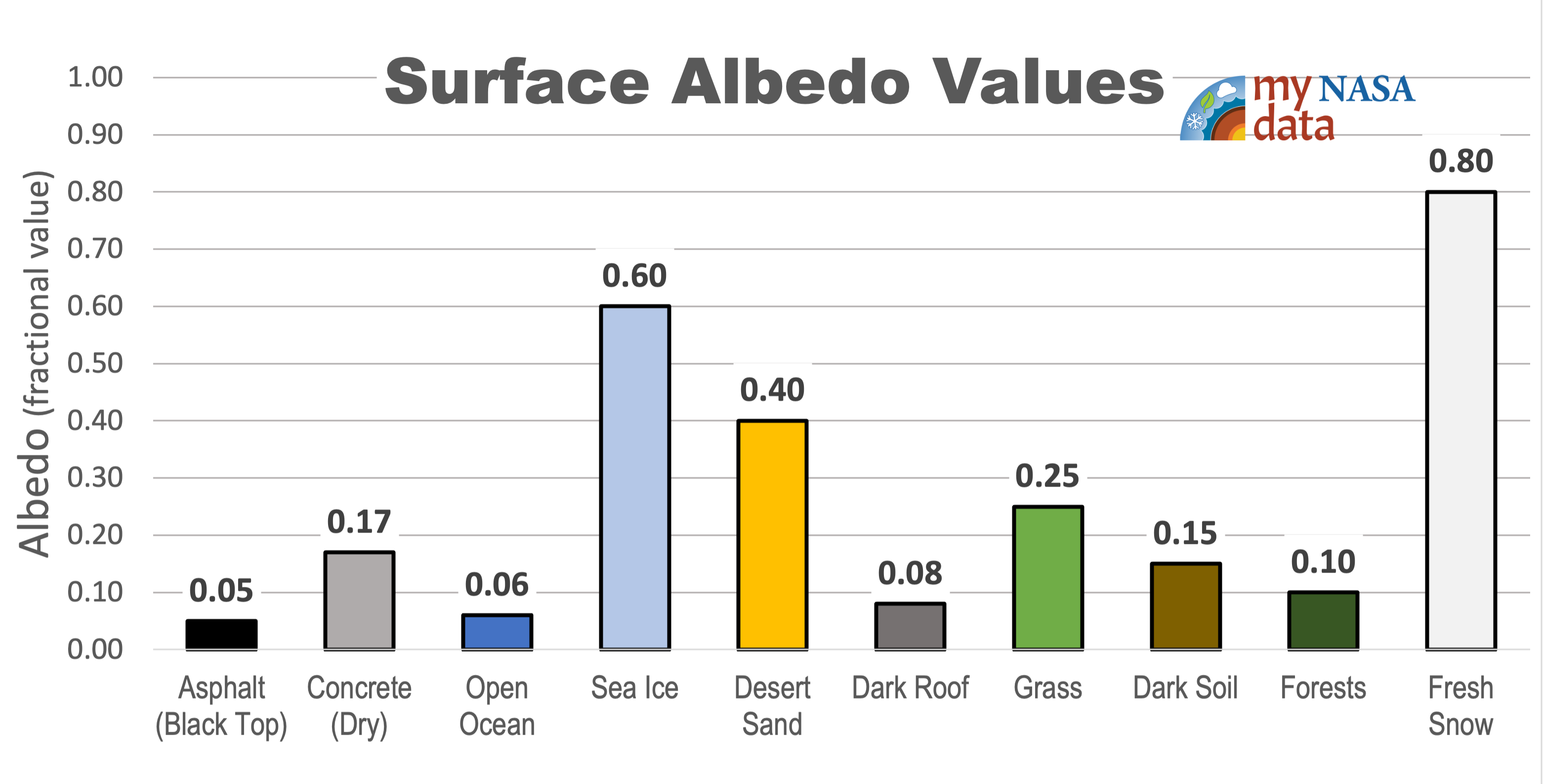
Students record albedo values from the bar chart as a reference to use for their Claim, Evidence and Reasoning activity in the Astronaut Pictures CER - Student Sheet.
Assign students (or student pairs/teams) one of the Astronaut Photographs that are in the Astronaut Photographs - Student Slides. Students should access both the image and the accompanying information from the image information slide. Each part will assist them with making a claim.
Note: Most information was retrieved as part of the image search when searching for and viewing the photograph in “Gateway to Astronaut Photography of Earth” catalog. However, some additional information has been provided to assist students with context. This additional information is clearly identified in the information slide.
Students (individually, pairs or small group) should work together completing the tasks associated with the Claim, Evidence and Reasoning structure that guides them to write a scientific argument. These arguments should respond to the question and make a prediction about the impact of Earth’s energy budget.
Students should share their statements to reveal that albedo changes are varied. At times, albedo is increased as other impacts result in a decrease. Reponses may vary, but students should correctly attribute the surface or color with albedo values. The change in amount of reflected and absorbed energy alters the amount of terrestrial longwave energy that can stay in the Earth system and ultimately cause further terrestrial warming.
Answers:
Teachers who are interested in receiving the answer key, please complete the Teacher Key Request and Verification Form. We verify that requestors are teachers prior to sending access to the answer keys as we’ve had many students try to pass as teachers to gain access.
Sources:
- Real World: Earth's Energy Balance - Energy In and Energy Out. (2018, November 26). YouTube. Retrieved September 21, 2022, from https://www.youtube.com/watch?v=ssQ5KGJ5fYQ
- (2022, April 8). Clouds and the Earth's Radiant Energy System: CERES. Retrieved September 21, 2022, from https://ceres.larc.nasa.gov/
- NASA Earth Observatory - Home. Retrieved September 21, 2022, from https://earthobservatory.nasa.gov/
- Gateway to Astronaut Photography of Earth. Retrieved September 21, 2022, from https://eol.jsc.nasa.gov/
- An Introduction to Astronaut Photography of Earth. (2021, August 12). ArcGIS StoryMaps. Retrieved September 21, 2022, from https://storymaps.arcgis.com/stories/f8318a5a70c44b28917b958c83491353
Disciplinary Core Ideas:
- PS1A: Structure and Properties of Matter
- PS3B: Conservation of Energy and Energy Transfer
- ESS2A: Earth Materials and Systems
- ESS3C: Human Impacts on Earth Systems
Crosscutting Concepts:
- Cause and Effect
- Systems and System Models
- Stability and Change
Science and Engineering Practices:
- Asking Questions and Defining Problems
- Obtaining, Evaluating and Communicating Information
- Students will compare and contrast albedo of various types of surfaces.
- Students use claim, evidence and reasoning to make a scientific argument linking a specific anthropogenic activity with a change in Earth’s albedo.
- Students will connect evidence from anthropogenic activities to impacts on Earth’s energy budget from evidence gathered about albedo.
- How do anthropogenic activities impact Earth’s albedo?
- How may photographs be used to connect human activity to changes Earth’s albedo?
For seventeen years, scientists have been examining this balance sheet with a series of space-based sensors known as Clouds and the Earth’s Radiant Energy System, or CERES. The instruments use scanning radiometers to measure both the shortwave solar energy reflected by the planet (albedo) and the longwave thermal energy emitted by it.
If Earth was completely covered in ice, its albedo would be about 0.84, meaning it would reflect most (84 percent) of the sunlight that hit it. On the other hand, if Earth was covered by a dark green forest canopy, the albedo would be about 0.14 (most of the sunlight would get absorbed). Changes in ice cover, cloudiness, airborne pollution, or land cover (from forest to farmland, for instance) all have subtle effects on global albedo. Using satellite measurements accumulated since the late 1970s, scientists estimate Earth’s average albedo is about about 0.30.
Using Claims, Evidence and Reasoning to help students structure a scientific argument:
Scientific argument are different from other types of arguments in that they require specific evidence in the form of specific data (qualitative or quantitative) to support the argument. In addition, the argument should clearly explain why the evidence is allowed to be used to support the claim. This is purpose of reasoning in this structure. In the classroom, reasoning is often the new information or concept that has been learned. In the case of this lesson, albedo is the specific definition that should be addressed. After making their structured argument it is important to allow students the opportunity to connect their argument to bigger concepts, such as the Earth’s energy budget.
- Claim: This statement should be a statement that links a specific independent variable and describes the specific change (if one occurred) in the dependent variable. The statement should not be general in nature. (no explanation is required)
- Evidence: Qualitative evidence should be specific enough to allow the reader the ability to visualize and interpret the data without having the data physically/visually available. Quantitative evidence should always be numerical values retrieved as a result of data analysis. While trends in data may be noted, numerical data, such as the slope, is required to support the trend.
- Reasoning: This includes the definition, concept, scientific law, scientific theory, or mathematical relationship that is being applied. The author both states the above and explains how it is being used to link the evidence with the claim.
- Connection: The level of connection will vary depending on the experience and prior knowledge of the student. This asks students to describe a cause and effect relationship without having to prove it. This ultimately should drive further questions that continue scientific inquiry and challenges the student to connect their argument to additional concepts.
- Students should understand the definition of albedo prior to (or at the beginning of) this lesson.
- For students to complete the CER - Connection question to Earth’s Energy Budget they should have already have knowledge of the fate of solar radiation (shortwave radiation) and terrestrial radiation (longwave radiation) and understand the role of albedo and function of greenhouse gases play in relation to shortwave energy and longwave energy.
- Students may think that ice and snow have a high albedo because they are cold. It is due to their color not the temperature.
- Students often think that humans activities only decrease Earth’s albedo since they strictly relate changes in albedo to ice and snow melt.
Balancing incoming and outgoing energy to Earth is like balancing an equation. When both are equal, Earth’s energy is in balance. Learn more about how changes in this balance may impact Earth. This NASA eClips video, Real World: Earth's Energy Balance - Energy In and Energy Out, explains how Earth's energy budget works.
- Students use the online Google Earth version and search for the latitude and longitude of their selected astronaut picture to view how the region has changed since the picture was taken.
- Students describe potential responses or approaches to increase Earth’s albedo other than simply reducing the human impact they investigated.
- Students can learn more about astronaut photography by accessing the StoryMap: An Introduction to Astronaut Photography of Earth.
- Internet Required
- One-to-One (tablet, laptop, or CPU)
- One-to-a-Group

